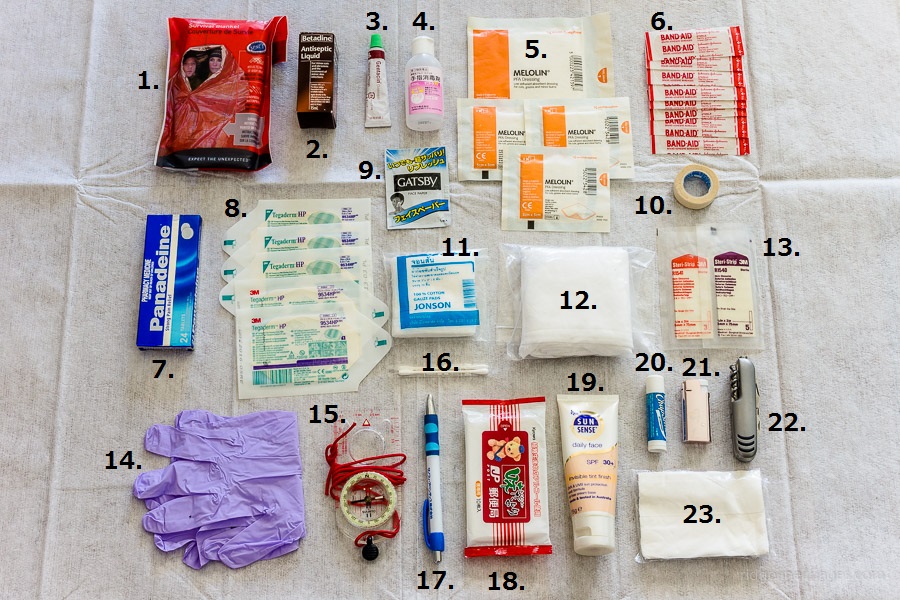Traverse with Confidence: A Comprehensive Guide on How to Prevent and Manage Common Hiking Injuries"
Trekking into the heart of nature offers an exhilarating escape, but the rugged terrains and challenging landscapes can pose physical challenges. Whether you're a seasoned hiker or a novice adventurer, the risk of injuries is inherent in trekking. However, armed with knowledge and proper preparation, you can minimise these risks and ensure a safer and more enjoyable trekking experience. In this comprehensive guide, we delve into the prevention and management of common hiking injuries, empowering you to traverse with confidence and face the trail head-on.
Understanding the Risks: Common Hiking Injuries: Before embarking on preventive measures, it's crucial to understand the common injuries that trekkers may encounter. From minor nuisances to more severe issues, these injuries can include:
- Sprains and Strains: Caused by overstretching or tearing ligaments and muscles, typically due to uneven terrain or improper footing.
- Blisters: Friction and pressure from ill-fitting footwear or excessive moisture can result in painful blisters, affecting the feet and potentially slowing down your pace.
- Twisted Ankles: Uneven surfaces and unstable ground can lead to ankle twists, causing pain and potential ligament damage.
- Dehydration and Heat-Related Issues: Inadequate fluid intake and exposure to intense heat can result in dehydration, heat exhaustion, or even heat stroke.
- Altitude Sickness: As you ascend to higher elevations, altitude sickness can set in, causing symptoms like headaches, nausea, and dizziness.
- Cuts and Abrasions: Brushing against sharp rocks, thorns, or branches can lead to cuts and abrasions, increasing the risk of infection.
Now, let's explore preventive measures and effective management strategies for these common hiking injuries:
Preventive Measures: Ensuring a Safe Trekking Experience

Proper Footwear Selection:
- Choose hiking boots that provide adequate ankle support and a comfortable fit.
- Break in new boots before embarking on a long trek to prevent blisters and discomfort.
- Use moisture-wicking socks to keep feet dry and reduce the risk of blisters.
Strength and Flexibility Training:
- Incorporate strength and flexibility exercises into your regular fitness routine to prepare your muscles for the demands of trekking.
- Focus on exercises that target the core, legs, and ankles to enhance stability on uneven terrain.
Gradual Acclimatisation:
- When trekking at higher altitudes, allow time for gradual acclimatisation to reduce the risk of altitude sickness.
- Ascend slowly, taking breaks to allow your body to adjust to changes in oxygen levels.
Hydration and Nutrition:
- Stay hydrated by drinking water regularly, especially in arid or high-altitude environments.
- Pack nutrient-dense snacks to maintain energy levels throughout the trek.
Proper Gear and Clothing:
- Dress in layers to regulate body temperature and protect against changing weather conditions.
- Use trekking poles to improve balance and reduce strain on joints during descents.
Trail Awareness:
- Stay vigilant and aware of your surroundings to prevent trips, slips, and falls.
- Use trekking maps and markers to navigate established trails, minimising the risk of getting lost.
Managing Common Hiking Injuries: First Aid on the Trail

Sprains and Strains:
- Rest the affected limb, apply ice if available, and compress the area with a bandage.
- Elevate the injured limb to reduce swelling.
Blisters:
- Clean the blister with antiseptic, allowing it to dry before applying a blister pad or moleskin.
- Avoid popping blisters unless absolutely necessary to prevent infection.
Twisted Ankles:
- Rest and elevate the injured ankle.
- Use compression with a bandage to reduce swelling.
- Consider taking over-the-counter pain relievers to manage pain and inflammation.
Dehydration and Heat-Related Issues:
- Move to a shaded area and rest.
- Rehydrate with water or electrolyte drinks.
- Cool the body by applying wet clothes to the forehead and neck.
Altitude Sickness:
- Descend to a lower altitude if symptoms persist or worsen.
- Stay hydrated and avoid alcohol and strenuous activity until acclimatised.
- Consult with a medical professional if symptoms are severe.
Cuts and Abrasions:
- Clean wounds with antiseptic wipes.
- Apply an antibiotic ointment and cover with a sterile dressing.
- Carry a basic first aid kit with essentials like bandages, antiseptic wipes, and pain relievers.
Conclusion: Empowering Trekkers with Knowledge
As you lace up your boots and venture into the great outdoors, knowledge becomes your most potent tool for a safe and enjoyable trekking experience. By understanding the risks, implementing preventive measures, and equipping yourself with basic first aid skills, you not only mitigate the chances of common hiking injuries but also ensure that you are prepared to face challenges head-on. So, embrace the trail with confidence, knowing that you have the knowledge to navigate the rugged terrains and make the most of your trekking adventures.


